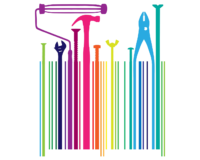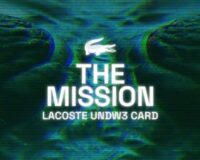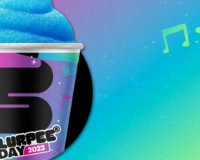Web3 status of retailers and brands in Switzerland

We decided to take a closer look at Switzerland, the home county of the Ethereum Foundation, and research retailers and brands there to learn about for what purposes they are using blockchain technology.
One of the most promising applications of blockchain technology is the improvement of traceability systems. It comes as no surprise that Nestlé, the world’s largest food and beverage company, and Migros, Switzerland’s largest supermarket chain, announced their blockchain technology adoption for food traceability solution already in 2019. Besides that, Nestlé keeps testing and experimenting with virtual reality since 2015 up until the latest integration of 3DVRS, 3D virtual reality technology to assist its retail partners with better merchandizing of their store shelves. What is more interesting for the web3 customers was the company’s virtual wearables showcased at the fashion show during the Metaverse Fashion Week at Decentraland in 2022, and their very first NFT collection with proceeds to charity launched the same year.
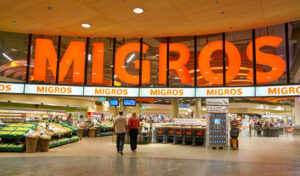
Last year, as well, marks Lindt’s entry to the metaverse with a virtual store where users can buy chocolate just like they would when purchasing from an eCommerce site, and learn about the company’s chocolate production process. They have not yet embraced blockchain technology, but entering the metaverse indicates a step towards web3.
On cursory research on luxury retailers, it seems as if each and every luxury watch brand has an NFT collection, but at a closer look that turns out not to be true. What is actually happening is that these collectibles get resold on the secondary market with accompanying certificates in the form of NFTs. These certificates are issued either by individuals or even on a platform that serves only for this purpose – to resell used watches and provide proof of authenticity with an NFT.
However, the strongest use case of blockchain technology among luxury watch companies is precisely the same one, as used in resell market by private individuals. Before concrete examples, let me explain what is the problem solved with this. Luxury items are already collectibles in the real world and are often resold hence subject to counterfeiting. Counterfeiting challenges have plagued the luxury industry for decades, just as is the case with the exclusive fine art market. Blockchain technology provides a solution to the fight against counterfeiting due to its main characteristics of immutability, security, transparency, and traceability. In other words, NFT, which is a part of blockchain technology, provides proof of ownership and authenticity, as well as proof of provenance. Some companies call these NFTs “digital certificates of ownership or authenticity” which is what they are in their essence. That is the main reason why luxury brands are turning to blockchain technology. Now, they can enable their customers with certificates secured by technology hence not possible to counterfeit. For luxury, authenticity is often the main objective and with NFT certificates this can be guaranteed. In addition to this, there could be other important information incorporated in such a certificate, like warranty, repairs, history of ownership, and even insurance. How important blockchain technology is for luxury brands shows that despite the competitive stand they aim to unite in “a non-profit association of luxury brands investing in technologies to enhance the customer experience and build a virtuous future for luxury” called Aura Blockchain Consortium and registered in Switzerland. But they are of course all independently coming up with their own business models.

Richemont’s brand Vacheron Constantin, and Breitling were among the first luxury watchmakers to offer certificates of authenticity secured by blockchain technology to their clients. Vacheron Constantin tested the concept in 2019 with its collection of vintage watches and extended blockchain digital certification to all its timepieces in January 2022. Breitling released a limited-edition watch featuring a blockchain-based digital passport in 2020 and later the same year extended digital blockchain technology to all of its new watches.
Swiss watchmaker Longines minted 45 NFTs to accompany sales of their watches at Alibaba’s Metaverse Art Exhibition in 2021. Besides Longines’s experience in the Chinese metaverse, where NFTs are called just digital collectibles, we are not aware of Longines minting NFTs outside of the Chinese blockchain ecosystem.
The same year (2021) a private watch collector minted an NFT associated with his rare piece of Patek Philippe Nautilus watch and offered it as a fractional NFT. An interesting concept for owning expensive goods and NFTs. This was not in any way connected to Patek Philippe’s official company, but it is just another use case of NFT technology in luxury retail, or more precisely the market of resold luxury items. It’s the first-ever Patek to be offered in fractions and over the blockchain.
Last year Rolex filed a trademark application that covers different matters related to NFTs and we are waiting for Rolex to come up with their own NFT collection and maybe their own marketplace.
Tag Heuer took a different web3 strategy, even though they also acknowledge the importance of proof of ownership, they made the first step by implementing new functionality to their smartwatch which enables the display of NFTs. So, instead of creating their own NFT collection, they decided to approach the NFT community enabling them to display their NFTs on Tag Heuer smartwatch.
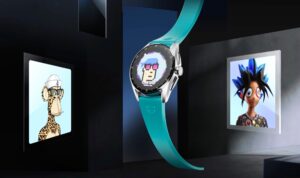
The first NFT-based membership program in the luxury and watch industry was created in 2022 by IWC by using NFTs and entering the metaverse as a new way to engage with their consumers. They have launched an NFT membership collection that grants access to the exclusive IWC Club and plan to launch a digital passport of the watches and start building their loyalty program based on those members and clients’ NFTs. The holders of IWC Club NFTs have exclusive access to the IWC metaverse built in collaboration with renowned architect, and access to the token-gated community platform. On top of that, there are other customer benefits, like access to exceptional events and interaction with professionals from different fields in real life.
An example of collaboration with a famous artist is the case of Hublot who launched their first limited edition timepieces in collaboration with Takashi Murakami, well-known artist in the NFT world in 2021. Since then, they consequently launched limited NFT collections connected with timepieces with the last drop in 2023. Each time providing exclusive access to the holders of, either limited edition timepieces or to the holders of the previously launched NFT collection, providing customers exclusivity and the joy of collecting.
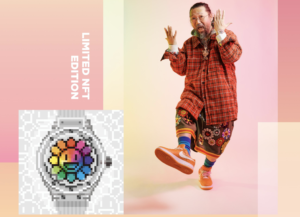
The last one I want to mention here is H. Moser & Cie. They have implemented all previously mentioned use cases and marvellously blended virtual and physical worlds.
